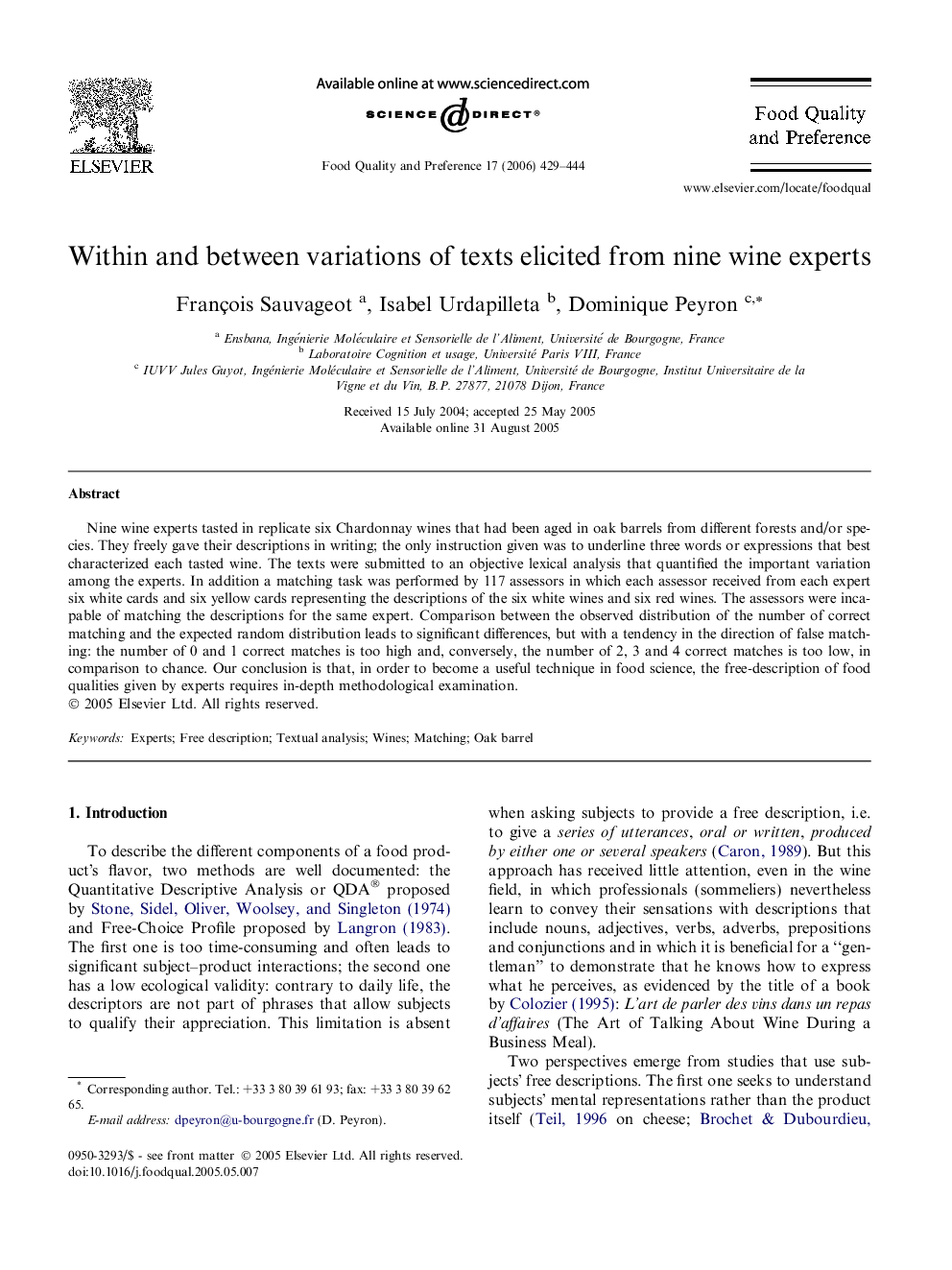| Article ID | Journal | Published Year | Pages | File Type |
|---|---|---|---|---|
| 4318360 | Food Quality and Preference | 2006 | 16 Pages |
Nine wine experts tasted in replicate six Chardonnay wines that had been aged in oak barrels from different forests and/or species. They freely gave their descriptions in writing; the only instruction given was to underline three words or expressions that best characterized each tasted wine. The texts were submitted to an objective lexical analysis that quantified the important variation among the experts. In addition a matching task was performed by 117 assessors in which each assessor received from each expert six white cards and six yellow cards representing the descriptions of the six white wines and six red wines. The assessors were incapable of matching the descriptions for the same expert. Comparison between the observed distribution of the number of correct matching and the expected random distribution leads to significant differences, but with a tendency in the direction of false matching: the number of 0 and 1 correct matches is too high and, conversely, the number of 2, 3 and 4 correct matches is too low, in comparison to chance. Our conclusion is that, in order to become a useful technique in food science, the free-description of food qualities given by experts requires in-depth methodological examination.
